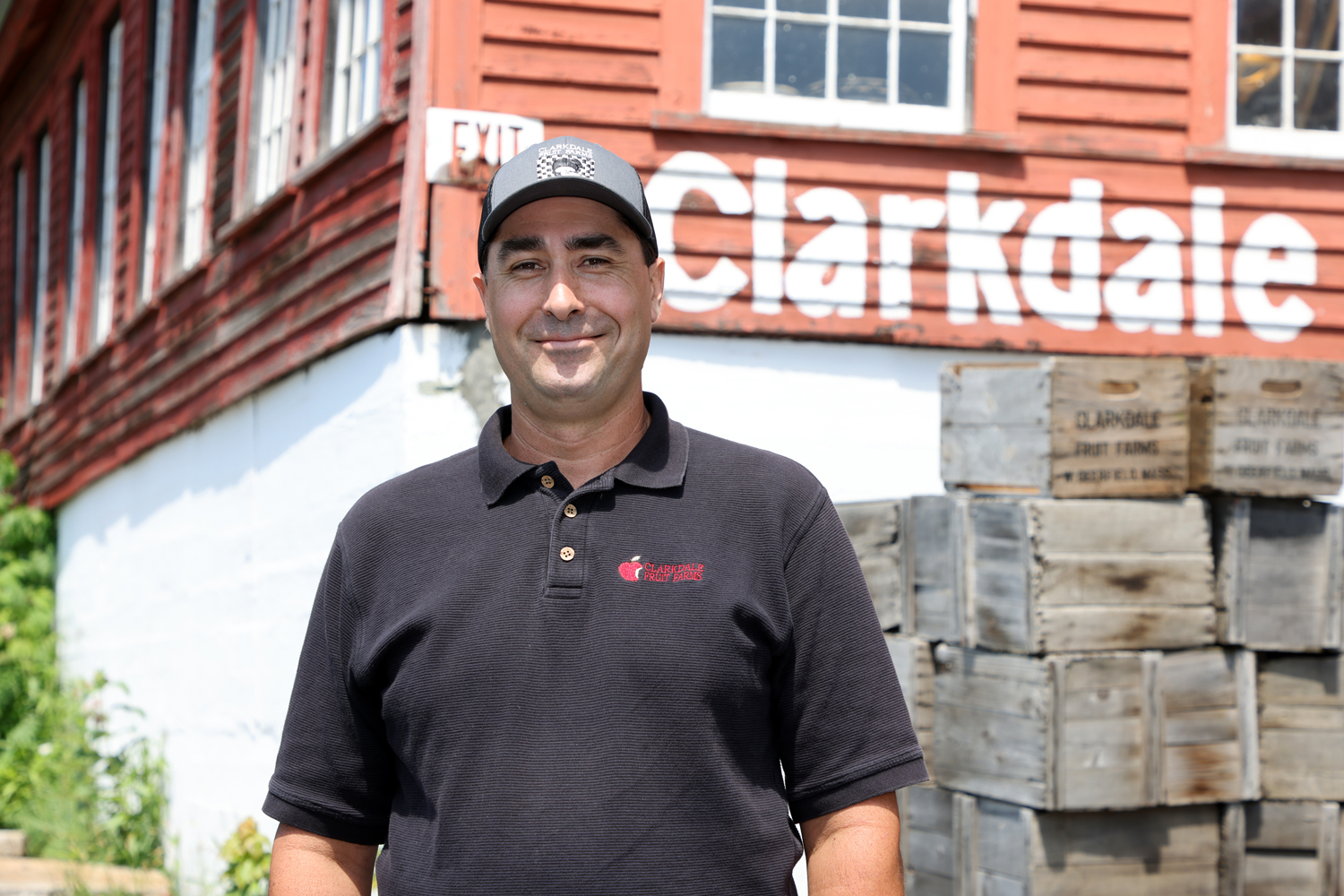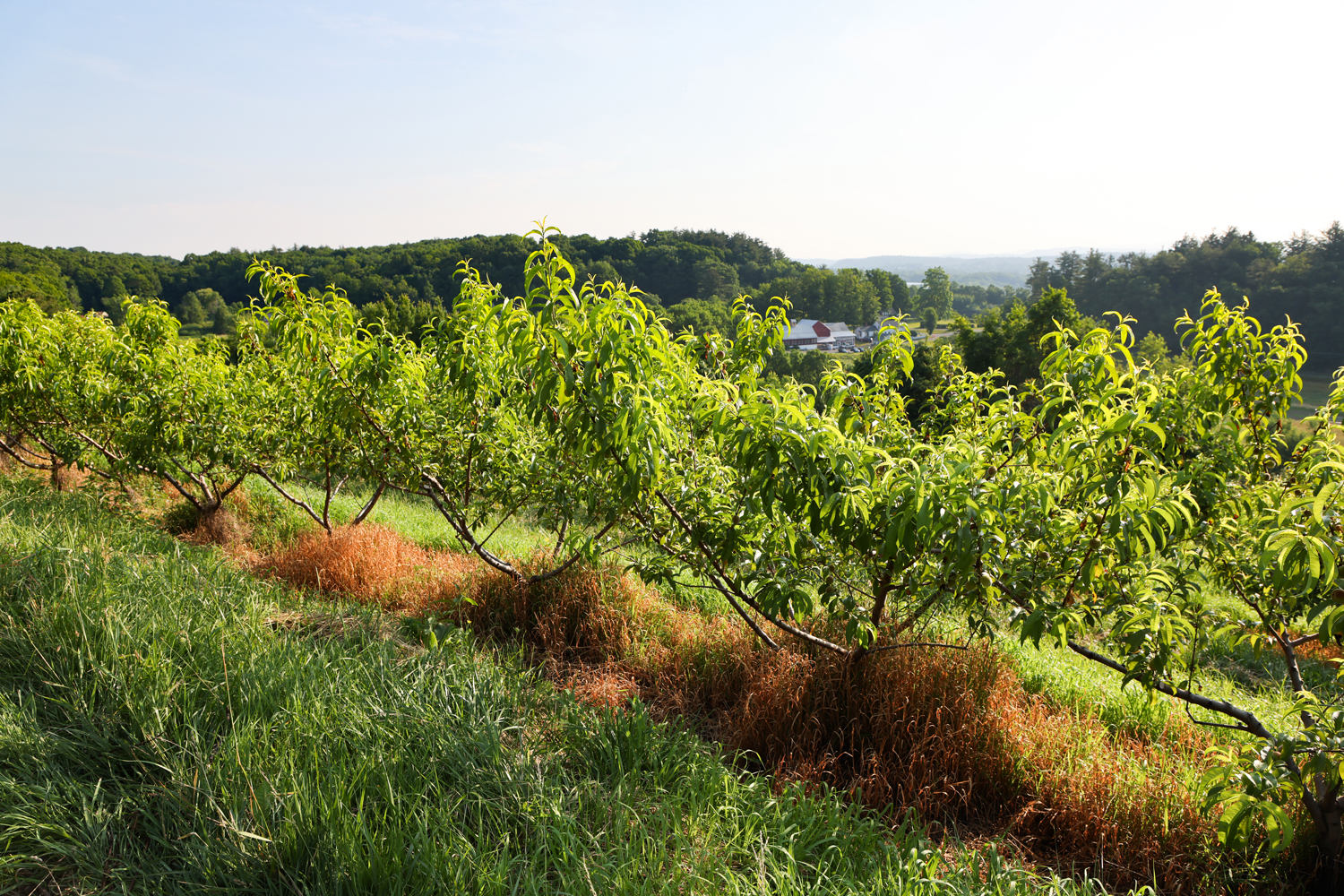For any farmer, the biggest challenge is weather; it’s a variable they can’t control. At Clarkdale Fruit Farms in Deerfield, Massachusetts, 2023 was the wettest year they had on record and the previous year was the driest. Those kinds of extremes are why owner Ben Clark purchased crop insurance.
Crop insurance protects producers from Mother Nature: events like freeze, frost, droughts, and pests like insects and wildlife. And it can also protect against a loss of revenue when there's a decline in price.

“Currently, we are farming 45 acres of apples, peaches, pears, plums, grapes, and cherries. Our farm was founded in 1915 by my great grandfather,” said Clark. “I'm the fourth-generation owner here and I work with my father Tom. We sell primarily in our retail store, picked fresh, sold as soon as we can. If we get a frost that wipes out the crop, we need to be prepared.”
The U.S. Department of Agriculture’s (USDA) Risk Management Agency (RMA) serves America’s agricultural producers through effective, market-based risk management tools to strengthen the economic stability of agricultural producers and rural communities. RMA manages the Federal Crop Insurance Corporation (FCIC) to provide innovative crop insurance products to America’s farmers and ranchers. Approved Insurance Providers (AIP) sell and service Federal crop insurance policies in every state and in Puerto Rico through a public-private partnership with RMA. Crop and livestock producers can purchase Federal crop insurance policies through crop insurance agents.
William Barnes, Deputy Director of the RMA Regional Office in Raleigh, North Carolina, explained how USDA’s crop insurance programs help growers like Ben Clark. “The Risk Management Agency serves to build better crop insurance throughout the country in places that have specific and unique challenges like the Northeast,” said Barnes. “One of the challenges is making sure that crop insurance has a price that can fulfill their needs should there be a disaster, which may be price related or weather related.”

Crop insurance offers producers the option to “buy up,” that is, increase the level of coverage. Clarkdale Fruit Farms found a balance between cost and coverage level that fits their operation. In 2023, the Clarks lost their entire peach crop due to warm days in January followed by subzero temperatures in February. Crop insurance helped the farm get through the year. “We’re at the 60 percent level, which we find is sort of a sweet spot of the coverage we want and the premium price. Having the buy-up, it really paid,” said Clark.
“We are paying a premium but being assisted by RMA and USDA, which makes it affordable for ourselves and I think a lot of orchards. I really encourage folks to take it on. It is a cost of business, but I think it's a small cost compared to the benefit you're getting,” said Clark.
A list of crop insurance agents is available at all USDA Service Centers and online at the RMA Agent Locator. Learn more about crop insurance and the modern farm safety net at rma.usda.gov or by contacting your RMA Regional Office.
Diane Petit is a Public Affairs Specialist with the Farm Production and Conservation Business Center.


